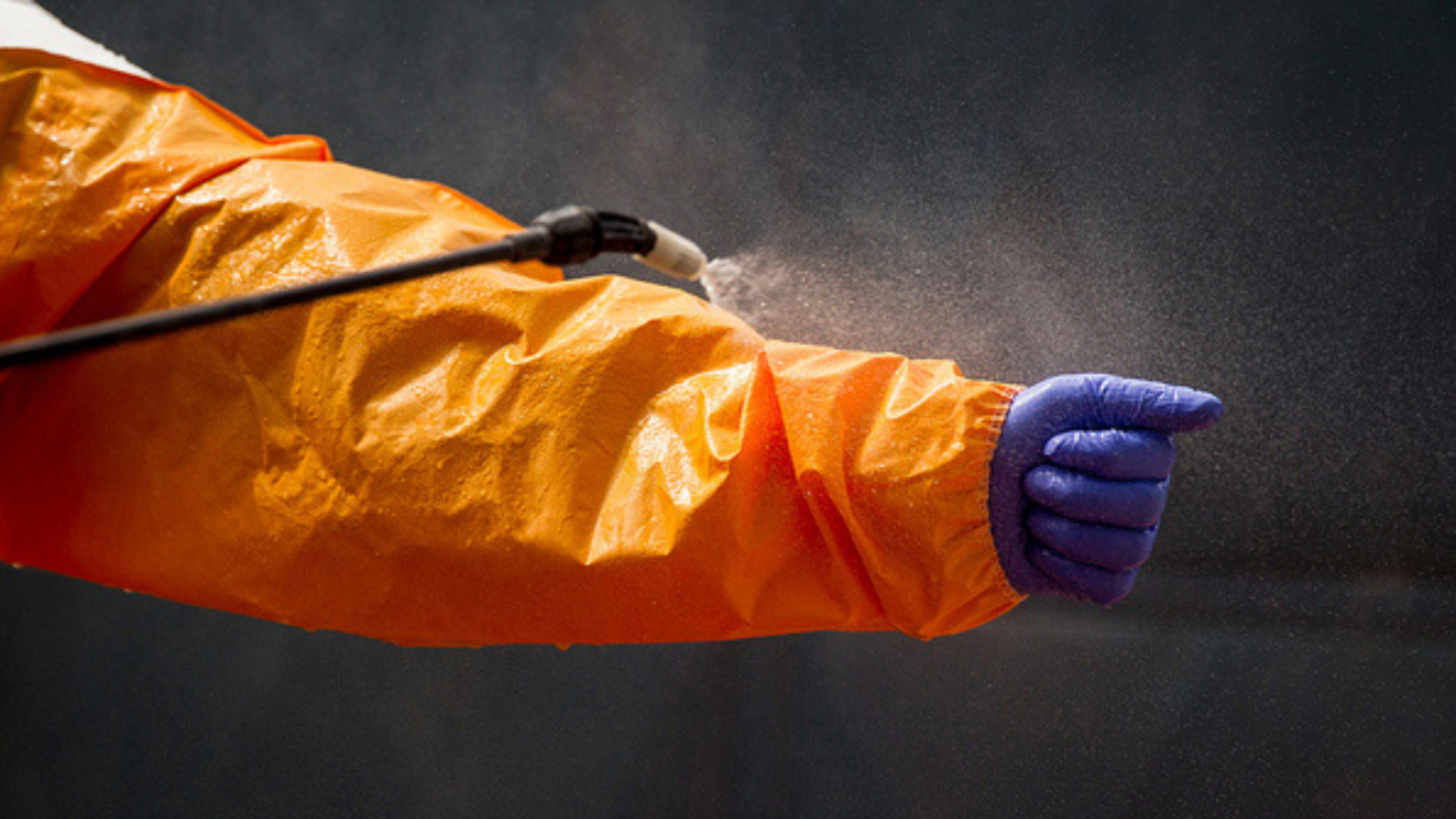This article was originally published by Ebola Deeply.
By Kate Thomas
A trial of the rVSV-ZEBOV Ebola vaccine among 7,651 individuals in Guinea has been found to have a protection rate of 100 percent. The vaccine was developed by Merck, the Wellcome Trust, and the governments of Norway and Canada, in conjunction with MSF and the London School of Hygiene and Tropical Medicine. Public health experts are calling for the vaccine to be rolled out immediately.
The trial is ongoing.
The rVSV-ZEBOV study draws on an Ebola single-dose vaccine trial conducted among 7,651 individuals in Guinea, between April 1 and July 20 this year. Because researchers wanted to save as many lives as possible, no placebo was used. Instead, a ring vaccination strategy was introduced. Participants, grouped in community clusters where at least one new infection had been recorded, were randomly assigned to be vaccinated either immediately, or 10 days later (the average incubation period of the virus.) The results were clear cut: there were no cases of Ebola among the immediate vaccination group, while there were 16 cases among the 3,528 people in the delayed vaccination group.
The trial continues in Guinea, but the control group has been abolished. All of those taking part will instead be vaccinated immediately, contributing to key safety data as the participant group widens. The trial could be extended to other countries before the vaccine is licensed.
There is still a need for further analysis.
“While this preliminary analysis is exciting, and the results are very encouraging, there are some issues about the study that raise potential uncertainties,” said infectious disease specialist Dr. Jesse Goodman, professor of medicine at Georgetown University Medical Center in Washington, D.C.
“These include that participants and investigators knew if subjects were getting the vaccine early or late, which may have affected their behavior, that a large number of eligible individuals in both groups did not get vaccinated, and that Ebola cases were apparently identified through normal disease surveillance mechanisms, which might miss some cases, particularly if less severe.”
Goodman said that further details and analysis can help us understand if these kinds of uncertainties could affect the results.
“The complete study data—and the study is still in progress—must be reviewed, including by appropriate regulatory authorities,” he said. “Nonetheless, the degree of protection reported seems convincing.”
A similar ring vaccination approach was used to help eradicate smallpox.
The trial relied on ring vaccination, also used to help eradicate smallpox in the late 1970s. Caused by the Variola virus, smallpox would present with thousands of pus-filled spots, a fever and exhaustion. About 30 percent of cases were fatal. Although the disease dates back at least 3,000 years, a similar ring vaccination approach led to its eradication; the World Health Organization (WHO) confirmed the last case in 1979. When an infection broke out, all high-risk contacts were traced and vaccinated. Then a second round of lower-risk individuals—essentially contacts of those on the contact list—were tracked down and vaccinated.
Children, pregnant women, and breastfeeding mothers could not take part in the study.
Children and adolescents under 18, as well as pregnant or breastfeeding women, were not vaccinated due to safety concerns. However, new safety data suggests the vaccine is safe for children and adolescents. “We may potentially be able to extend the size of the vaccination ring and include [them],” said John-Arne Rottingen, the director of the Division of Infectious Disease Control at the Norwegian Institute of Public Health, and one of the co-authors of the study.
There are some side-effects.
“We saw some side effects, such as fever or feeling tired, but we’d expect these things with a vaccine like this,” said Rottingen. “In general, the safety profile is very good and we will look into this more as we do the longer-term follow-up,” he said.
The licensing process may take time, but there’s a way to protect communities in the meantime.
Merck, the vaccine manufacturer, can decide whether to apply for emergency licensing or to go through regular vaccine licensing channels. Either way, the process is expected to take several months, and the vaccine will probably not be ready for distribution until the end of 2015.
“That’s why it’s very important to continue the trial and provide access to the vaccine within the ongoing study,” said Rottingen. “Without a license, that’s the best way to make sure individuals are protected.”
Authorities in Sierra Leone and Liberia might also decide to green-light an extended arm of the trial, depending on research and partner collaborations.
We cannot forget the need for ongoing surveillance and deeper community engagement.
Ring vaccination depends on meticulous epidemiological surveillance. Mobilization and communication work is also key. In Liberia, the work of responsive, cohesive community groups was a key factor behind halting widespread transmission of Ebola. Although deep-rooted trust issues between government and communities remain, Ebola messaging was more effective there than in Sierra Leone or Guinea. In Guinea, some still hold tight to the idea that Ebola does not exist. Closing this persistent communication gap, with empathy and cultural understanding, is still key to ending the epidemic. A vaccine can only be given to those willing to receive it.
*****
*****
Kate Thomas is a contributor to Ebola Deeply.
[Photo courtesy of Ebola Deeply]
